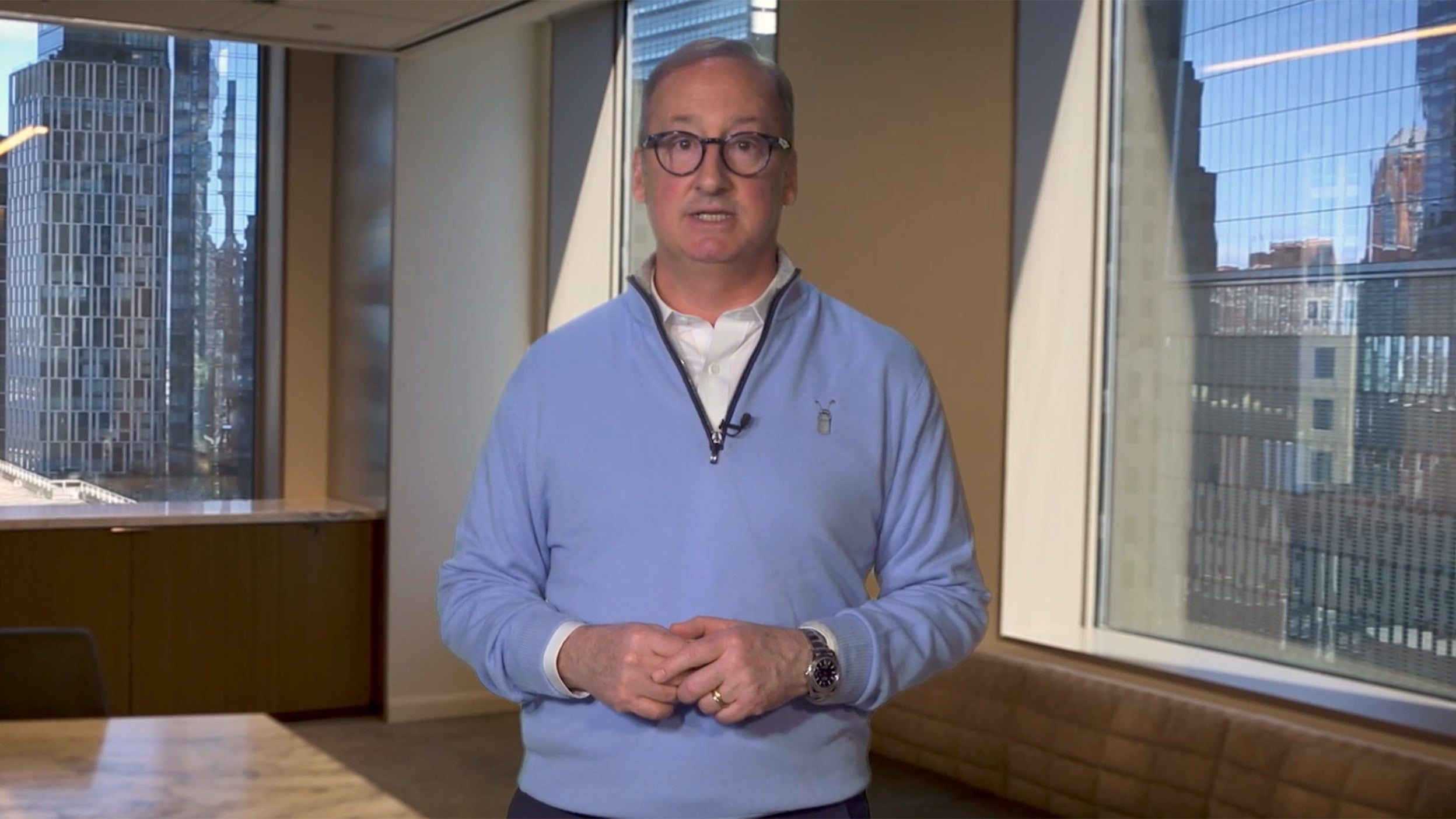
Private credit The strategic advantage of AAA-rated CLO Notes
Invesco Private Credit’s Kevin Petrovcik discusses new developments for AAA-rated Collateralised Loan Obligation (CLO) note investments and their potential advantages.

Is volatility an early indicator of a cyclical or structural shift calling for new investment conditions?
A changing world order, desynchronising global growth, end of zero rates, demographic shifts, and changing climates are impacting real estate.
How geopolitics, new normal inflation and interest rates, capital flows, return requirements, and tech may impact real estate.
Commercial real estate is a long-term investment. But it’s still important to determine if short-term noise and volatility is an early indicator of a cyclical movement or a structural shift. Some shifts reveal a likely set of future investment conditions for commercial real estate. Some just raise more questions. We don’t have the luxury of turning on a dime in real estate markets, so our strategy needs to be based on solid principles.
The chart below highlights how global direct real estate returns, represented here by the GPFI, follow a smoother path than listed real estate, represented by the FTSE EPRA/NAREIT index, clearly showing that as real estate investors it is important for us to be awake to what is going on, but not reactive to every single signal.
Note: MSCI Global Quarterly Property Fund Index (GPFI) was reweighted to 25% Asia Pacific, 25% Europe and 50% North America. All returns shown in USD.
Source: Invesco Real Estate based on data from MSCI Global Quarterly Property Fund Index and Macrobond as of December 31, 2024. “Reweighted GPFI” refers to the MSCI Global Quarterly Property Fund Index (GPFI) reweighted to 25% Asia Pacific, 25% Europe and 50% North America. Past performance is not a guide to future returns.
Five things we believe today |
Five things we’re debating |
|---|---|
The world order is changing |
How geopolitics impacts growth and inflation |
Global economic growth is desynchronising |
New “normal” inflation and interest rate levels |
Zero-interest rates are over |
Will the changing world order influence capital flows? |
Demographic shifts are changing economies |
Changed long-term return requirements? |
Climate patterns are changing investment risk |
Impact of technology advancements |
Our beliefs about market conditions have implications for sector exposures and total return composition (Read: European Real Estate: A new real estate value cycle). Changing the mix of sector exposures is a way to shift the composition of total returns, namely property income growth and asset pricing.
The world order is changing. The start of 2025 brought significant changes to political and trading relationships. Trade flows, both for goods and services, drive requirements for industrial and office spaces and create employment opportunities, which also attract workers who require housing. Political tensions impact capital flows, in terms of cross-border investment flows, and through lower confidence in long-term positions.
Global economic growth de-synchronized. The 1980s through to the middle of the 2010s saw considerable shifts towards globalisation, which in turn drove synchronicity in economic cycles. This trend has started to reverse in the last 10 years. It’s also been accelerated by the new US administration. While it’s unclear how far it will unwind, global investors need to consider the outlooks for different markets.
Zero-interest rates are over. The global inflation shock in 2022 was an abrupt end to the low — and even negative — interest rates across many developed markets. Inflationary pressures are likely to remain sticky around central banks’ targets, in our view. So, while we believe that there’ll be limited interest rate cuts, rates could remain higher than in the prior decade.
Demographic shifts are changing economies. Demographic trends, like the aging populations and ongoing urbanisation, are affecting the demand for real estate space, and in turn property prices and investment strategy through the pricing of real estate returns relative to other assets. How these trends intersect with affordability further determines relative location and sector demand.
Climate patterns are changing investment risk: Real estate has fixed locations. Any changes around the property will affect it. Shifting climate patterns can have a direct impact. For example, flooding or wildfire risks affect the availability of insurance or funding. Also indirectly, through changing people’s views of an area, for example, which affect the demand for that location.
Our beliefs are firm on the five points above, but there are five areas where the outlook is less clear. So, our longer-term asset and portfolio strategies must manage the risks of a range of potential economic and capital market outcomes.
How geopolitics shapes growth and inflation. Higher or more trade tariffs add costs and reduce growth, though it’s too early to tell if any effect will be transitory or persistent. The realignment of international relations is forcing nations to reinvest in domestic infrastructure, or defence capabilities, which will likely add to growth but with potential inflationary pressures.
New “normal” inflation and interest rate levels: While headline inflation is unlikely to return below central banks' target levels, it’s unclear how far above it they’ll settle. This has a consequential impact on interest rates for the longer term. Diverging interest rates will, in turn, impact exchange rates.
Will the changing world order influence capital flows? The reshaping of international relations and trade may impact investor appetite to diversify globally, particularly if governments introduce capital restrictions.
Changed long-term return requirements. Ultra-low interest rates and global diversification created a low-risk environment, which lowered required returns. Even a partial unwind of this is likely to push investors to expect higher returns to compensate for increased risk.
Impact of technology advancements: Tech impacts real estate in two ways: Directly from demand for real estate types, such as life science assets to meet growing healthcare investment, or the rise of data centres to meet growing data storage needs. Or indirectly through changes in how existing real estate is used, particularly leading to a shift in utilisation in almost all real estate sectors.
Short-term volatility shouldn’t impact investing for the long-term, but a successful strategy needs to take into account trends and to minimise exposures to “known unknowns.” Our approach to real estate investments focuses on optimizing income yield and growth and minimizing reliance on cap rate movements as the driver of returns. In seeking property income growth, we look for assets and opportunities which are either supported by long-term structural drivers of occupier demand, or where active asset management can drive cash flow improvements.

Invesco Private Credit’s Kevin Petrovcik discusses new developments for AAA-rated Collateralised Loan Obligation (CLO) note investments and their potential advantages.

Invesco Real Estate’s value-add team discusses its approach in a challenging market highlighting a disciplined, local team-based execution programme and strategic investments in sectors like logistics and living.

Explore the benefits of incorporating AAA-rated CLO notes may provide to an investment strategy including consistent income potential and possible hedge against interest-rate volatility.
Investment risks
The value of investments and any income will fluctuate. This may partly be the result of exchange rate fluctuations. Investors may not get back the full amount invested.
Important information
Data as at 24 March 2025 unless otherwise stated. Views and opinions are based on current market conditions and are subject to change.
This is marketing material and not financial advice. It is not intended as a recommendation to buy or sell any particular asset class, security or strategy. Regulatory requirements that require impartiality of investment/investment strategy recommendations are therefore not applicable nor are any prohibitions to trade before publication.
EMEA4344299